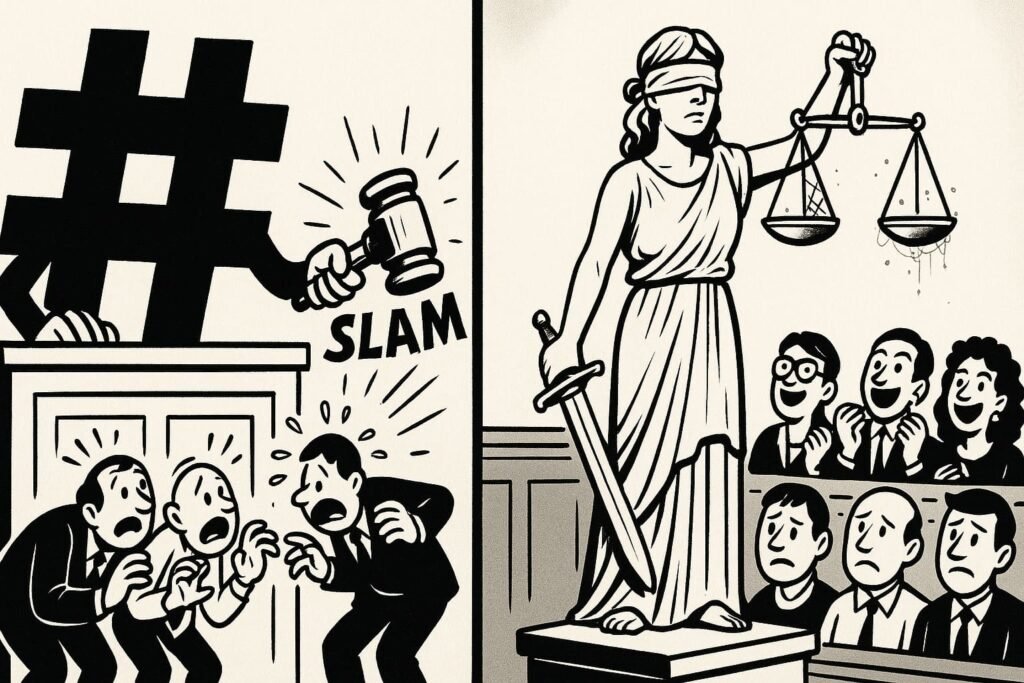#MeToo Explained – From Reckoning to Backlash
From Empowerment to Fear
#MeToo began in 2017 as a long-overdue reckoning. For the first time, survivors of harassment and abuse spoke out together — and powerful men lost careers overnight. The whisper network became a roar.
But as with many movements, noble beginnings quickly collided with messy realities. Accusations went viral, due process was sidelined, and the movement’s energy often turned inward. What started as empowerment slid into paranoia, division, and backlash.
Table of contents
What Was #MeToo?
At its core, #MeToo was simple:
- Survivors breaking silence about sexual harassment and assault.
- A demand for accountability from powerful abusers.
- A cultural reset: the old rules of silence were over.
In practice, it became a global social media uprising — millions posting “#MeToo,” pushing institutions, companies, and courts to respond.
How It Worked in Practice
- Media: Accusations became front-page stories. Headlines replaced trials.
- Politics: Court appointments and elections became battles over past allegations.
- Corporations: HR rolled out mandatory trainings, DEI offices added “harassment prevention” modules, and CEOs cut ties with accused figures.
- Culture: Silence was reframed as complicity — everyone had to declare their stance.
The hashtag turned pain into politics, outrage into policy.
The Gains
- Powerful abusers (Weinstein, Epstein, and others) faced justice.
- The culture of silence cracked; victims gained visibility.
- Workplaces could no longer ignore harassment as “just how things are.”
For a moment, accountability felt real.
The Costs
- Due Process Eroded: A tweet could equal conviction. “Innocent until proven guilty” was flipped.
- Collateral Fear: Mentoring and hiring women became “too risky” for some men in power.
- Weaponisation: Anonymous lists and vague accusations destroyed reputations without evidence.
- Paralysis: Workplaces obsessed over compliance rituals instead of solving deeper power imbalances.
The price of cultural victory was a climate of suspicion.
Why the Backlash?
Because the rules felt rigged:
- To deny was proof of guilt.
- To defend yourself was betrayal.
- To question the movement was heresy.
When every accusation carried equal weight — from awkward dates to violent assault — nuance disappeared. Many who initially supported #MeToo grew wary of its excesses.
Why It Matters
#MeToo is a case study in digital activism: hashtags scaling faster than institutions can adapt. It shows both the power and the peril of viral outrage.
Like Occupy Wall Street, it began with righteous anger but left behind mixed results. Like BLM, it revealed how outrage becomes an industry.
The reckoning was real. So was the backlash.
From Reckoning to Backlash
#MeToo exposed real abuses and toppled untouchable men. But its excesses — trial by hashtag, fear of false steps, weaponised accusations — left many disillusioned.
The irony is brutal: a movement meant to empower women sometimes ended up isolating them further, as doors closed in the name of caution.
Reckoning was necessary. But without balance, it curdled into backlash.
👉 Want the bigger picture? Explore our full Activism Explainer Hub to see how movements, tactics, and ideologies shape modern politics.
FAQ
What is #MeToo?
A movement that began in 2017, empowering survivors to speak out about harassment and abuse, mainly via social media.
What did it achieve?
Accountability for powerful abusers, cultural change in workplaces, and a collapse of silence around harassment.
Why is it controversial?
Because accusations often bypassed due process, and reputations were destroyed without trials.
What were the unintended effects?
Fear of mentoring or hiring women, weaponisation of accusations, and cultural division.
Is #MeToo over?
No. The hashtag faded, but its rules linger — reshaping law, HR policy, and cultural norms long after the viral moment.



